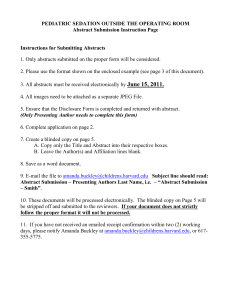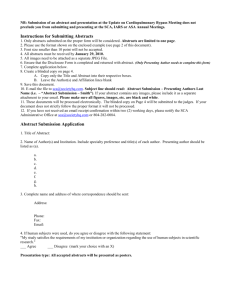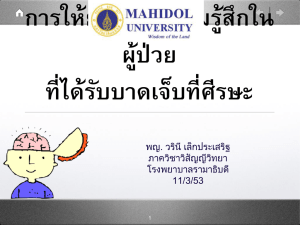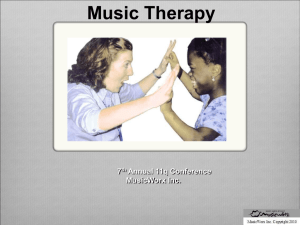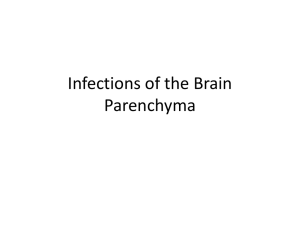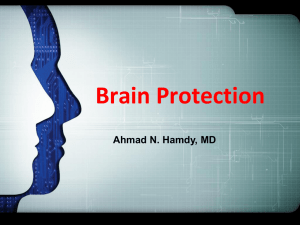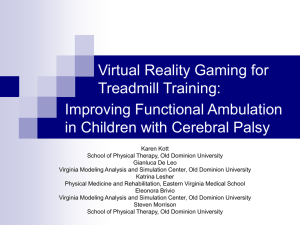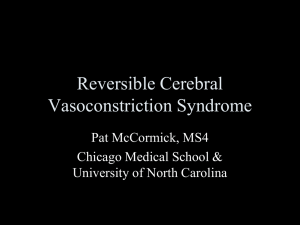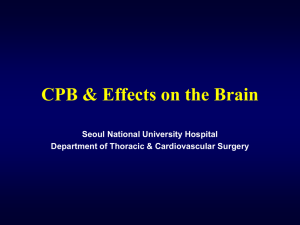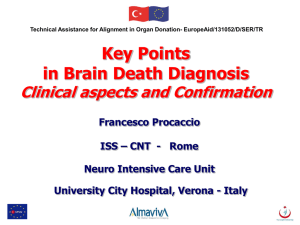neuroprotection in pediatric cardiac surgery
advertisement
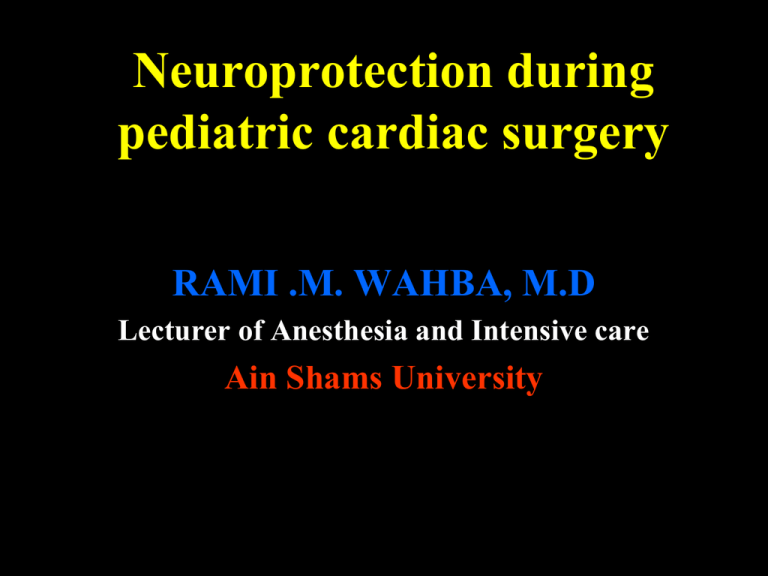
Neuroprotection during pediatric cardiac surgery RAMI .M. WAHBA, M.D Lecturer of Anesthesia and Intensive care Ain Shams University Introduction • Concern towards long-term functional neurological morbidities . • • • • this review is foccussing on : adverse neurologic outcomes. factors associated with brain injury. neuroprotection . Neurologic Outcome • early postoperative period (stroke and seizures) • longer-term issues (abnormal school performance, learning disabilities,and behavioral issues) • cognitive abilities • childhood development Aetiology • cerebral injury may occur before, during and after heart surgery. • consequences of hypoxic/ischaemic/reperfusion injury may evolve during the postoperative period over several days. Brain monitoring • Real-time neurologic monitoring should be an integral part of neuroprotective strategies . • Several monitoring modalities are available. Electroencephalographic Monitoring • signal is affected by electrical interference, patient temperature, anesthetic agents, and CPB. • Newer devices use processed EEG technology . The Bispectral Index (BIS) • BIS is used to detect electrical silence during deep hypothermia. • BIS values • BIS monitoring is reported to detect cerebral hypoperfusion and cerebral air embolism. • EEG monitoring is best combined with other neurologic monitoring modalities. Near infrared spectroscopy (NIRS) • A new clinical monitor • The NIRS displays a numeric value, the regional cerebral saturation index (rSO2i) • rSO2i reflects brain tissue oxygen content influenced by cerebral oxygen delivery, oxygen consumption, and arterial/venous blood volume ratio Transcranial Doppler Ultrasound • sensitive,real-time monitor of cerebral blood flow velocity (CBFV) and emboli . • CBF autoregulation is lost at profound hypothermia. • Transcranial Doppler ultrasound is used to determine the threshold of detectable cerebral perfusion during low-flow CPB Multimodality Neurologic Monitoring • processed EEG, NIRS, and TCD—measure different aspects of neurologic function . • They are complementary rather than exclusive. • 90% of abnormal events are detected by NIRS and 10% by TCD (emboli, potential overperfusion of the brain). • If resources are limited, NIRS offers the most clinical information to the clinician Brain Protection • Good appreciation of the interplay of factors that influence cerebral metabolism and blood flow is important for brain protection. Hypothermia and Deep Hypothermic Circulatory Arrest • Electrocerebral silence occurs at about 17°C nasopharygeal temperature. • deep brain cools faster than the subcortical areas. • Current practice is to cool for about 20 minutes to deep hypothermia (15°C to 20°C) . • DHCA causes an immediate cellular energy supply-demand imbalance . • the safe period might be 20 to 30 minutes, but this is controversial. • Alternatives to DHCA : intermittent cerebral perfusion,regional cerebral perfusion, and lowflow CPB Intermittant Cerebral Perfusion • Cerebral energy metabolism becomes anaerobic with 20 minutes of DHCA. • intermittent systemic recirculation during DHCA preventes : -cerebral anaerobic metabolism -improves brain histology and neurologic outcome when compared with DHCA. Low-flow Cardiopulmonary Bypass • low-flow CPB was superior to DHCA with respect to: -High-energy phosphate preservation -Cerebral oxygen metabolism -CBF -Cerebral vascular resistance -Brain lactate levels. Regional Cerebral Perfusion • During aortic arch surgery, DHCA can be avoided by using antegrade cerebral brain perfusion. • Continuous regional brain perfusion is achieved at flows of 20 to 30 mL/kg/min. Hemodilution • In the past, hematocrit values have ranged from 10% to 30% when DHCA is utilized • Recent data suggest a hemacrit close to 30% might be advantageous. Acid-base Management on Cardiopulmonary bypass • During deep hypothermia, pH-stat management in children : -improves CBF - more effectively cools the brain. -The oxygen dissociation curve shifts rightward, increasing oxygen availability. -There is a more rapid recovery of high-energy phosphates after DHCA. • These advantages outweigh the disadvantage of an increase in the embolic load • Compared with a-stat, infants managed with pHstat had lower postoperative morbidity and shorter recovery time to first EEC activity after DHCA. • Some advocate that pH-stat should be switched to alpha-stat management when cooling has been achieved. Glucose Management • In 1988 hyperglycemia was reported associated with increased risk of brain injury in children. • the Boston Circulatory Arrest Study did not find any relationship between hyperglycemia and neurologic injury in children. • avoiding hypoglycemia might be preferable to restricting glucose in infants undergoing heart surgery. Anti-inflammatory Therapies • A study in 29 children undergoing continuous flow CPB found dexamethasone administration before CPB led to a reduction in the post-CPB inflammatory response. • Ultrafiltration hemoconcentrates and removes some anti-inflammatory mediators. • Leukocyte filtration has improved neurologic outcome after DHCA Pharmacologic Neuroprotection • Agents such as barbiturates, propofol, volatile anesthetics, lidocaine, benzodiazepines, and calcium channel blockers have been shown experimentally to attenuate the neurologic injury from CPB and DHCA. • volatile agents,barbiturates, and propofol reduce ischemic neuronal injury after a short postischemic recovery period. Conclusion • Extracorporeal circulation increases the likelihood of neurologic injury, and DHCA represents additional risk. • Most children with surgically repaired CHD function within the normal IQ range but do have considerable neurodevelopmental problems. THANK YOU
